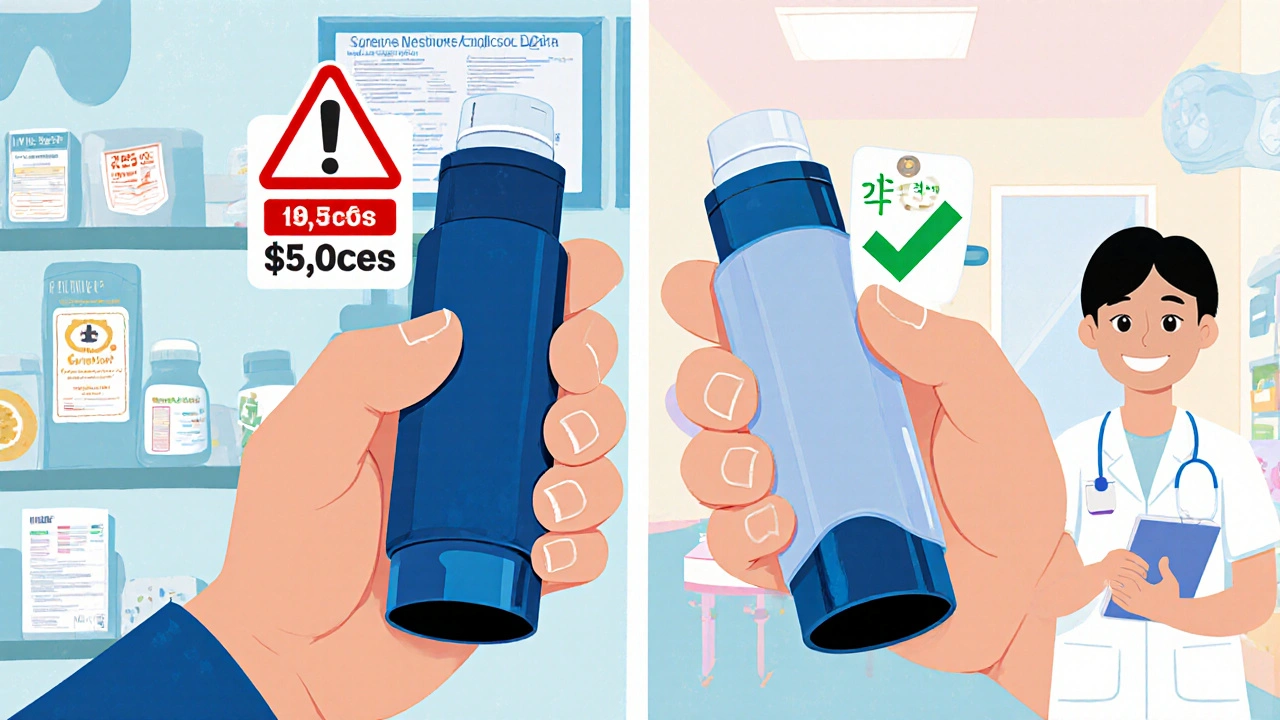Asthma Inhalers: Types, Uses, and How to Use Them Right
When you have asthma, your asthma inhalers, portable devices that deliver medication directly to the lungs to open airways or reduce inflammation. Also known as puffers, they’re the most common and effective way to manage asthma day to day. Without them, even simple activities like walking up stairs or playing with kids can become exhausting—or dangerous. But not all inhalers are the same. Some give you quick relief when you’re struggling to breathe. Others work slowly over weeks to keep your lungs calm. Mixing them up, or using them wrong, can mean your symptoms don’t improve—even if you’re taking them every day.
The two main kinds of asthma inhalers are bronchodilators, medications that relax tight muscles around the airways to open them up fast and corticosteroid inhalers, anti-inflammatory drugs that reduce swelling and mucus in the lungs over time. Bronchodilators like albuterol are your rescue inhalers—they work in minutes when you feel tightness or wheezing. Corticosteroid inhalers like fluticasone or budesonide? Those are your daily controllers. You won’t feel them working right away, but skip them and your lungs slowly become more sensitive to triggers like cold air, pollen, or smoke. Many people use both: one for emergencies, one for prevention. And yes, using the right technique matters more than you think. If you don’t coordinate your breath with the puff, most of the medicine lands in your mouth or throat instead of your lungs. That’s why doctors often ask you to demonstrate your technique during checkups.
It’s not just about picking the right device—it’s about understanding how your body responds. Some people need a spacer to help the medicine reach deeper into the lungs. Others find dry powder inhalers easier than mist ones. And if you’re using a corticosteroid inhaler, rinsing your mouth after each use isn’t optional—it cuts your risk of thrush, a common fungal infection. You might also wonder why your doctor didn’t just give you a pill. The truth is, inhalers put the medicine exactly where it’s needed, with far fewer side effects than oral steroids. That’s why they’re the gold standard. But even the best inhaler won’t help if you’re using it inconsistently or ignoring early warning signs. That’s where tracking symptoms and knowing when to adjust your plan becomes just as important as the device itself.
Below, you’ll find real-world guides on how to use these devices properly, how to tell if your medication is working, and what to do when side effects pop up. You’ll also see how some asthma treatments overlap with other conditions—like how corticosteroid inhalers relate to steroid tapering, or how inhaler misuse can mimic fatigue from other meds. These aren’t just random posts. They’re the practical, no-fluff advice people actually need to take control of their asthma without guesswork.
Symbicort vs Alternatives: What Works Best for Asthma and COPD?
Symbicort (budesonide/formoterol) helps manage asthma and COPD, but it's not the only option. Learn about cheaper generics, alternative inhalers like Fostair and Advair, and when to consider triple therapy.
